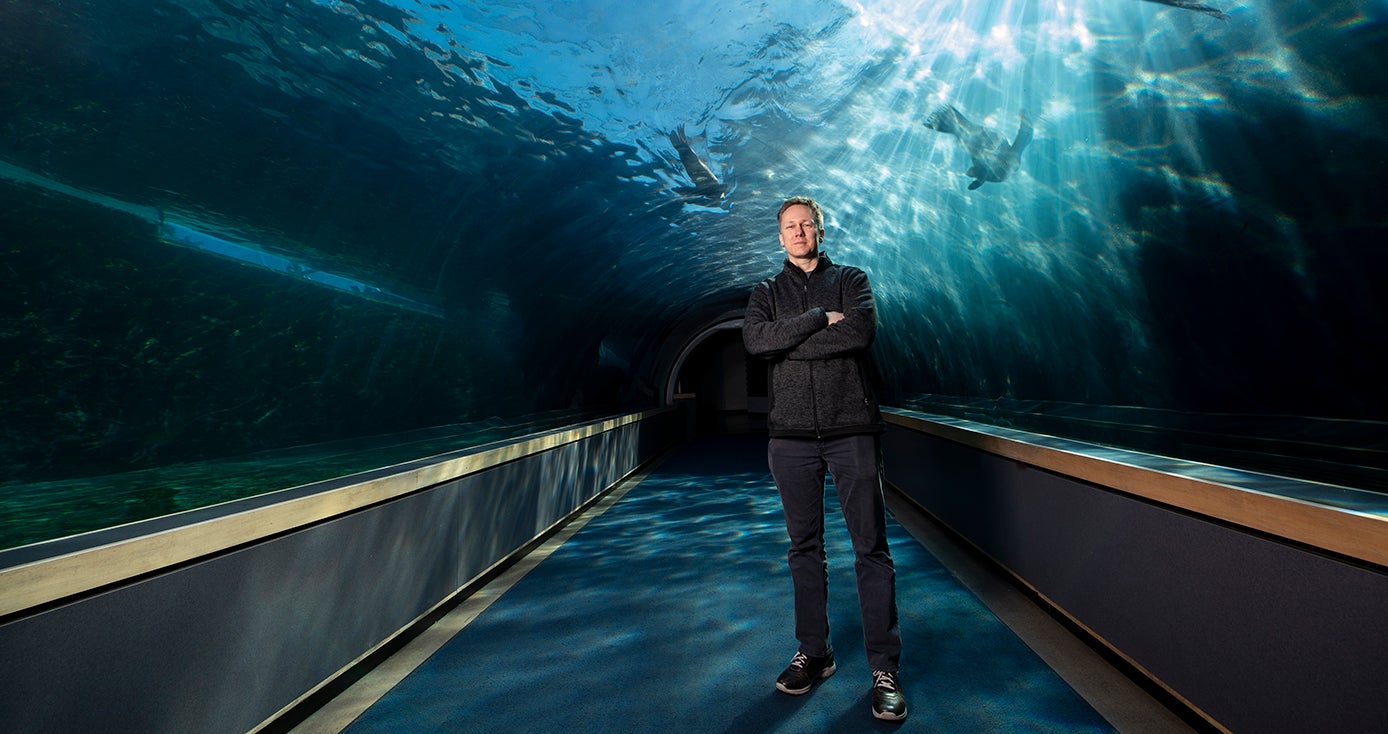
Subscribe to Pittwire Today
Get the most interesting and important stories from the University of Pittsburgh.Geneticist Explores Evolution’s Mysteries
This story, written by Susan Wiedel, is excerpted from the spring 2019 issue of Pitt Magazine, the University’s flagship alumni publication.
Nathan Clark is at work, traveling around the world, just like he always does. And, as usual, he’s also traveling back in time. Yet, his mind-boggling exploits take place without him ever leaving his lab on the 10th floor of the University of Pittsburgh’s Biomedical Science Tower 3. He’s an evolutionary geneticist and, on this particular day, he and an undergraduate researcher on his lab team are checking results from an experiment involving the genes of dolphins and killer whales, going back millions of years.
The results, unexpected, bring their routine to a sudden halt. Clark realizes that if what they’ve learned is valid, it could pave the way for new insights into disease susceptibility and disease origins — both in these two species and in ourselves.
Working closely with colleagues within and outside of his lab, Clark, an assistant professor in the Department of Computational and Systems Biology in Pitt’s School of Medicine, spends much of his workday developing and using computer programs to scour genomes in order to decipher genetic evolution. It was in 2003 that researchers first sequenced the human genome. But Clark points out that scientists still don’t know what the majority of those genes are doing, genes that are shared across thousands of species, including dolphins and killer whales. In this sense, says Clark, “we’re still kind of in the Dark Ages.”
So, if scientists don’t know which combinations of genes are responsible for which physical traits, Clark asks, how can doctors treat their patients suffering from congenital diseases caused by unidentified genes gone awry? Or, how can scientists know whether, for example, dolphins and killer whales are genetically predisposed to survive human-induced changes taking place in their waterways?
Clark believes his lab’s research — such as studying how physical traits, like vision or dietary adaptations, have evolved across species — can help resolve these questions.
There's more to this story of revolutionary research. Keep reading about Clark’s work.


